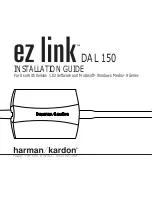
11
6.4 INTERFACE-ECHO MODE (I-E)
This mode is used with delay line transducers. It measures material thickness from the end of the
interface between probe delay line and material and the back wall of the material. This mode is
similar to the echo to echo mode as two echoes and two gates are required, however they have
different applications.
Interface to echo is mainly used when measuring
thicker materials in the medium to high region of
the measurement range, only the strong interface
echo and the first back wall echo are required.
The second back wall echo is much weaker than
the first due to attenuation, so in thicker materials
it can be lost.
Echo-echo mode is useful for measuring very thin
materials at the lower end of the measurement
range and the back wall echo is less likely to be
lost in the "ring down" or noise from the interface
echo.
The pictures show typical A-scans
when measuring in interface to
echo and echo to echo
respectively. Note how in echo
-echo mode, the first gate is moved
to ignore the first echo from the
end of the delay line. Selecting the
correct measurement mode and
transducer will automatically set
the gate positions and hold-off to
match.
I-E Image Key
E-E Image key
A Delay line echo
A Gate 1 detect mark
B Gate 1
B Interface echo
C Gate 1 detect mark
C Gate 1
D Gate 1
D Gate 2 detect mark
E Gate 2 start
E Gate 2 start
F Gate 2 detect mark
Note: The gauge measures the thickness between the
two detect marks
More information on the difference between the Interface to echo and the echo to echo
measurement modes can be found on the Elcometer NDT knowledge centre on
www.elcometerndt.com.
.
.
Transducer
Delay Line
Test Material
Piezoelectric crystal













































